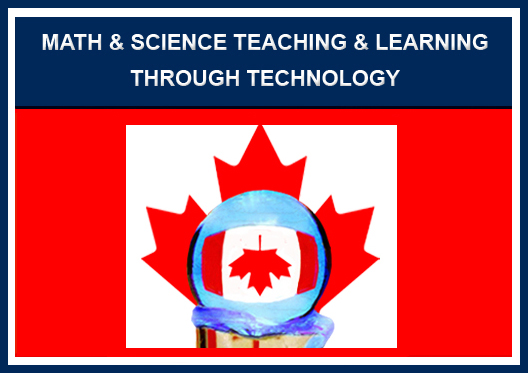 I just came back from the AAPT Winter 2014 National Meeting. My team presented 4 presentations there: two posters and two contributed talks. Our presentations focused on the use of technology in physics teacher education. One piece of technology we have been focussing on lately is PeerWise. This is a very powerful collaborative tool that helps students learn how to ask multiple choice conceptual questions. We explored its use in physics teacher education. This was a natural continuation to our earlier studies in which we focused on asking multiple-choice conceptual questions. We modeled these questions in our Mathematics and Science Teaching and Learning through Technology resource – http://scienceres-edcp-educ.sites.olt.ubc.ca/ . Our paper on the topic appeared in LUMAT journal – a Finnish journal of mathematics and science teaching and learning: http://www.luma.fi/lumat-en/2636
I just came back from the AAPT Winter 2014 National Meeting. My team presented 4 presentations there: two posters and two contributed talks. Our presentations focused on the use of technology in physics teacher education. One piece of technology we have been focussing on lately is PeerWise. This is a very powerful collaborative tool that helps students learn how to ask multiple choice conceptual questions. We explored its use in physics teacher education. This was a natural continuation to our earlier studies in which we focused on asking multiple-choice conceptual questions. We modeled these questions in our Mathematics and Science Teaching and Learning through Technology resource – http://scienceres-edcp-educ.sites.olt.ubc.ca/ . Our paper on the topic appeared in LUMAT journal – a Finnish journal of mathematics and science teaching and learning: http://www.luma.fi/lumat-en/2636
Modeling Active Engagement Pedagogy through Classroom Response Systems in a Physics Teacher Education Course
Marina Milner-Bolotin
Department of Curriculum and Pedagogy, Faculty of Education, The University of British Columbia • marina.milner-bolotin@ubc.ca
Heather Fisher
Department of Curriculum and Pedagogy, Faculty of Education, The University of British Columbia
Alexandra MacDonald
Department of Curriculum and Pedagogy, Faculty of Education, The University of British Columbia
Peer-reviewed research article. Submitted October 15th, 2013. Published December 30th, 2013.
Abstract
One of the most commonly explored technologies in Science, Technology, Engineering, and Mathematics (STEM) education is Classroom Response Systems (clickers). Clickers help instructors generate in-class discussion by soliciting student responses to multiple-choice conceptual questions and sharing the distribution of these responses with the class. The potential benefits of clicker-enhanced pedagogy include: increased student engagement, reduced anxiety, continuous formative assessment, and enhanced conceptual understanding. Most studies, however, investigate the effects of clicker-enhanced instruction in large undergraduate STEM courses. The impact of this pedagogy on learning in small secondary or post-secondary classrooms is still relatively unexplored. The context of this study is a secondary physics methods course in a Teacher Education Program at a large Canadian university. One of the course assignments required future teachers to develop multiple-choice conceptual questions relevant to the secondary physics curriculum. This study investigates the impact of modeling clicker-enhanced active engagement pedagogy on future teachers’ Content Knowledge, Pedagogical Knowledge, and Pedagogical Content Knowledge, as revealed by this assignment. The results of the study indicate that: (1) modeling clicker-enhanced pedagogy in a physics methods course increases future teachers’ interest in active learning; (2) clicker-enhanced pedagogy is a powerful vehicle for developing Pedagogical Content Knowledge of future physics teachers; (3) clicker-enhanced pedagogy is a useful tool for teacher educators for identifying and addressing the gaps in the Content Knowledge of future teachers. This study sheds light on developing future teachers’ capacities to design and implement instruction that is driven by conceptual questions in the presence or absence of technology and the impact of this process on their Pedagogical Content Knowledge and attitudes about conceptual STEM learning.
However, we were missing a collaborative component, where teacher-candidates can help each other improve their questions. PeerWise systems was something we were looking for. Thus, we implemented this system in the Physics Methods course at UBC and presented a poster on the results of our studies at the AAPT 2014 Winter meeting. PeerWise Poster_AAPT_Poster2014 I think it is a beginning of a very interesting study as it allows us to do things with technology that we could not have done before. This is what technology should be used for – not to do the same things as we have been doing before, but to explore the affordances of technology to achieve old and new pedagogical goals. I hope we are on the right track.
